Order Araneae | Scientific name Thomisus onustus Rank Species | |
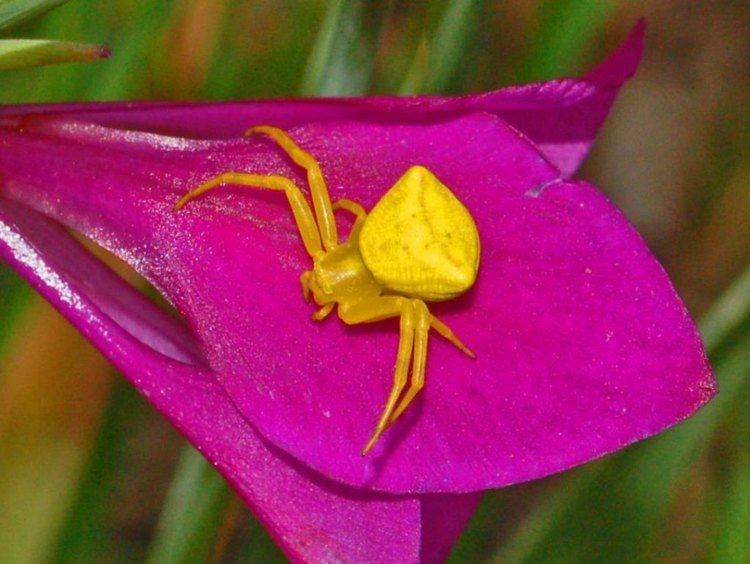 | ||
Similar Thomisus, Thomisidae, Misumena vatia, Flower crab spider, Synema globosum | ||
Heather spider thomisus onustus capturing a fly
Thomisus onustus is a crab spider species in the genus Thomisus belonging to the family Thomisidae.
Contents
- Heather spider thomisus onustus capturing a fly
- Found a thomisus onustus white spider outside
- Distribution
- Description
- Habitat
- Nutrition
- Reproduction
- References
Found a thomisus onustus white spider outside
Distribution
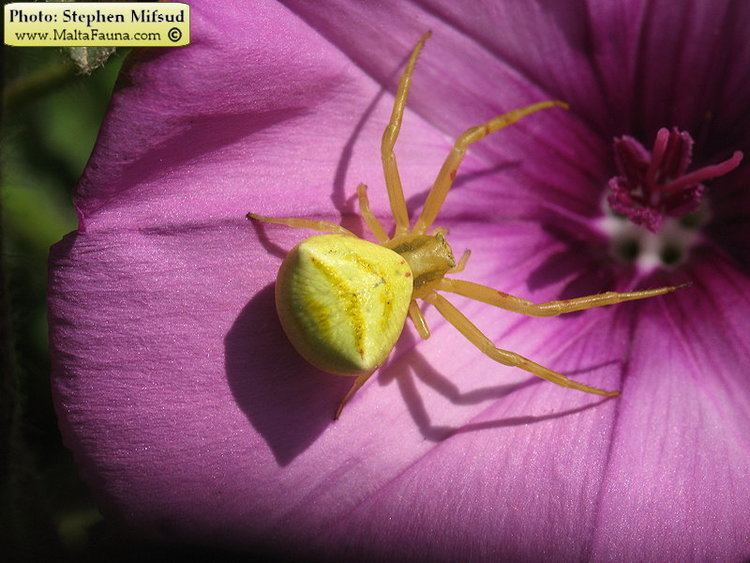
It has a Palearctic distribution from Great Britain and Portugal in the West to Japan in the East. It is present in most countries of Europe, but it is absent in Iceland, Ireland, Norway, Denmark and Finland. North-south distribution extends from Sweden to South Africa and from Siberia to Central Java, including temperate and tropical ecozone.
Description
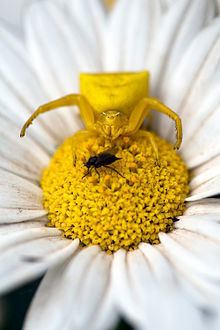
This species shows an extreme sexual dimorphism both in size and coloration, also in comparison with other crab spiders. The adult males reach a body length of only 2–4 millimetres (0.079–0.157 in), while females are 7–10 millimetres (0.28–0.39 in) long. This species is characterized by the prominent rear corners of the opisthosoma.

In males the basic colour of the prosoma varies from yellow brown to dark brown, the opisthosoma may be yellow and green or brown. Also females are very variable in colour, their basic colour can be white, yellow or pink.
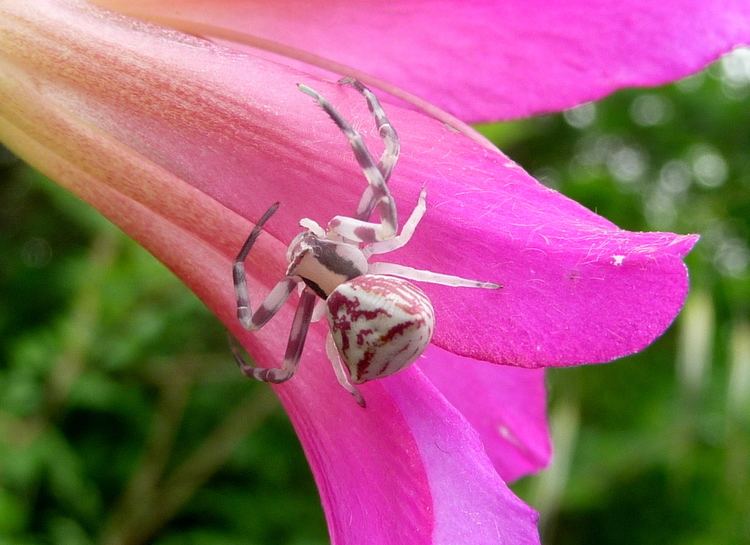
As a matter of fact these crab-spiders hide themselves adapting the colour of their body to the colour of the flowers on which they are waiting for preys, a behaviour that conceal them from predators and from the pollinating preys.
Habitat
These spiders prefer warm temperatures, forest-free areas, dry and sandy habitats with high solar radiation and dry grasslands.
Nutrition
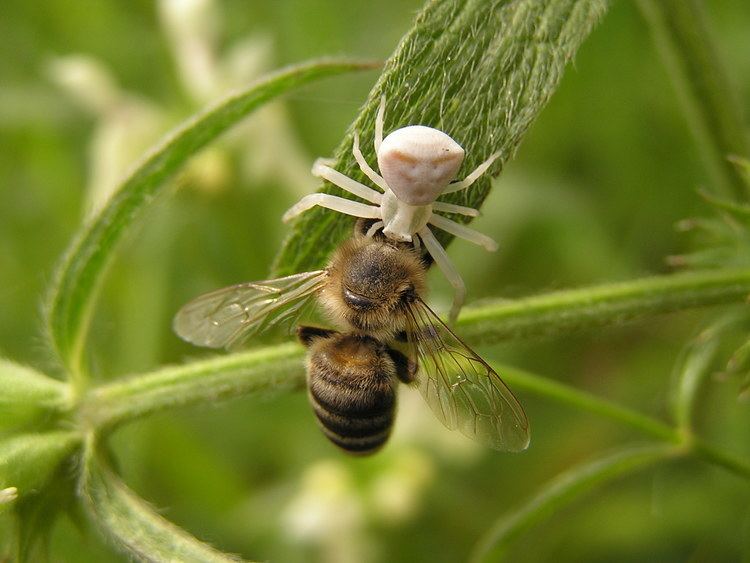
Like other species of the family Thomisidae these crab spiders do not make a web, but actively pursue their preys. They usually wait for preys positioned for hunting on flowers. The spiders are disguised by assuming the same colour as the flower, fooling both insect and bird predators. The prey consists of flower-visiting insects of all species, such as hover flies, bees, wasps, butterflies or beetles, which are often several times larger than the spider. They take their preys with two powerful and highly enlarged front leg pairs and usually kill them by biting on the back of their neck. Emerging spiderlings of Thomisus onustus may feed on pollen or nectar when insect preys are lacking.
Reproduction
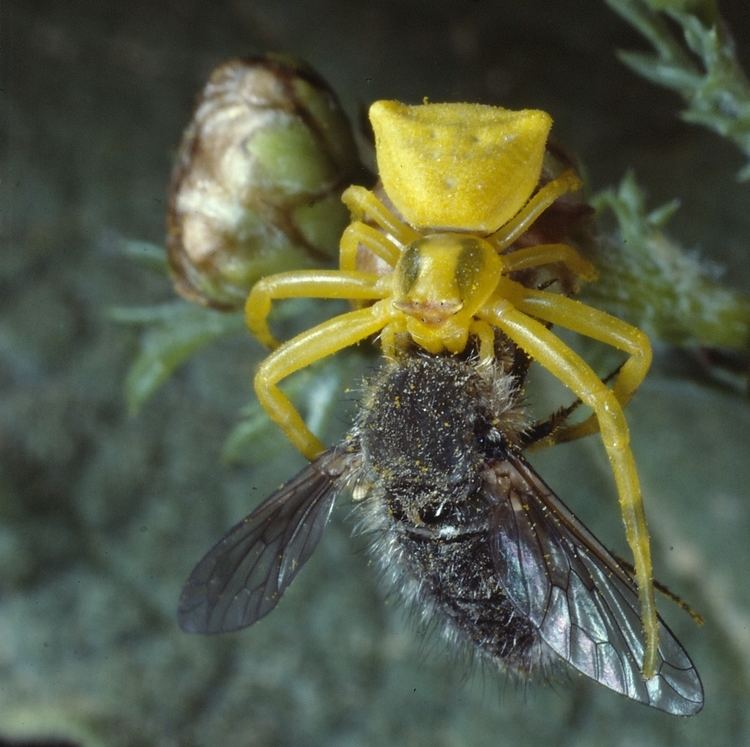
Mating takes place mainly in June. The male climbs onto the back of the female to copulate. Finally, the male leaves the female. The female during the entire mating is completely passive and does not show any aggressive behaviour.
